|
For immediate release
ESPANOLA, NM — The inspiring short documentary MOVING ARTS | Setting Hearts Ablaze by the award-winning production company Docufilms is gaining international recognition for its powerful portrayal of how art can transform young lives. The film, which features the non-profit Moving Arts Española, has been named a 2025 Cannes World Film Festival Finalist, a New York International Film Award Semi-Finalist, and the Best Documentary Short winner at the Touchstone Independent Film Festival. Additional accolades include: ● Official Selection – Los Angeles Independent Shorts Awards ● Official Selection – East Village New York Film Festival ● Official Selection – IndieX Film Fest ● Best Original Score - TELLY Awards ● Best Documentary - TELLY Awards ● Best Social Impact - TELLY Awards The documentary captures the essence of Moving Arts philosophy that “Art is Medicine”, illustrating how creativity, discipline, and compassionate mentorship guide children from fear and hurt toward safety, trust, and healing. Through a vibrant blend of dance, music, painting, photography, video production, gymnastics, and digital art, the organization provides a nurturing environment for self-expression, resilience, and growth. “We were honored when DocuFilms approached us about featuring Moving Arts in their newest documentary,” said Roger Montoya, Creative Director and Co-Founder of Moving Arts. “This project beautifully captures the creativity, dedication, and impact of our program, and we were thrilled to see our students shine. When they recently shared the trailer with us, we were blown away by their innovative approach to showcasing the magic of Moving Arts.” MOVING ARTS | Setting Hearts Ablaze features deeply moving interviews, stunning cinematography, and a narrative piece created by former Moving Arts students highlighting the growing challenges in Española, where up to 60% of students in the Rio Arriba County school district are being raised by grandparents or extended family. “It was beautiful to hear the voices of our alumni telling our story and talking about the impact Moving Arts has had on their lives,” said Salvador Ruiz, Executive Director and Co-founder. The documentary also showcases a powerful dance performance by San Ildefonso’s Than Povi Martinez, reflecting the limitations of conventional education and the liberation that creative practice provides. At the heart of the film are founders Roger Montoya, a 2019 CNN Hero, and Salvador Ruiz, a 2022 Univisionario, along with a passionate team of educators, alumni, and volunteers. Together, they have created a thriving community where youth are empowered to heal, grow, and lead through experiential learning and artistic exploration. Docufilms, known for its emotionally rich and socially impactful documentaries such as Movement, BIG little, Season Two, and Eating History | A Taste of New Mexico, brought its signature storytelling approach to this heartfelt project. “Moving Arts is a powerful example of what it means to uplift a community through creativity, discipline, and compassion,” said Docufilms director, Michael Campbell. “It was an honor and a privilege to witness the transformative impact of their work and to help share their story with a broader audience.” MOVING ARTS | Setting Hearts Ablaze is more than a film—it’s a celebration of community, creativity, and the unshakable belief that every child deserves a place to heal, grow, and thrive. For more information about Moving Arts or to support youth leadership initiatives, visit movingartsespanola.org Moving Arts was approached by Docufilms following the news coverage that they were in need of a forever home. The search for a forever home continues, but the organization remains committed to staying in the Española Valley and raising the millions of dollars necessary to ensure that their doors are always open to serve the children and youth in the community. For press inquiries, film screenings, or interviews, please contact: Email: [email protected] Phone: 844-623-2787 Website: movingartsespanola.org Learn more about the film and upcoming screenings at movingartsespanola.org/events ###
0 Comments
Jun 6, 2025 | NMDOT Press Release
SANTA FE – Out of an abundance of caution and with public safety as its top priority, the New Mexico Department of Transportation (NMDOT) will close the historic Oñate Bridge in Española at 8 a.m. on Saturday, June 7, ahead of the anticipated monsoon season. The bridge will remain closed indefinitely as engineers address ongoing concerns about riverbed erosion around one of the bridge’s piers that could pose a risk during periods of high river flow. “Protecting the traveling public is our highest priority,” said Transportation Secretary Ricky Serna. “Given the potential for increased water levels and further scour during monsoon rains, this closure is a proactive step to ensure everyone’s safety.” The closure, which applies to both vehicle and pedestrian traffic, will remain in place while further evaluations and potential mitigation efforts are explored. Detours will be in effect, routing traffic through two nearby bridges on either side of the Oñate Bridge. NMDOT began monitoring the structure in 2019 following an underwater inspection that identified erosion at a pier. A follow-up inspection in January 2025 found further deterioration, prompting additional hydraulic modeling that confirmed the need for action. In recent months, NMDOT’s Bridge Bureau, Drainage Bureau and District Five collaborated with the Federal Highway Administration (FHWA) to evaluate the bridge’s condition and explore options for continued monitoring. A joint assessment in June with FHWA scour experts resulted in the decision to close the bridge prior to any significant rainfall events. By Felicia Fredd Have you ever had a moment with a garden, or ‘built landscape’—a perfectly normal one—where the normality of it suddenly seemed perfectly bizarre? It happens to me all the time—even on projects I, myself, have designed.
It’s not so much the ridiculous effort required to organize outdoor space—and to keep it that way—as it is the specific choices intended to create a coherent and blissful experience, which can often seem quite strange. Most of us evaluate environmental quality effortlessly, but the specific visual 'languages' that shape overall impressions are less apparent —and are, in fact, the subject of many ecological planning and design studies. Ecologists are urging us to rethink how we alter landscapes. We, the people, don’t like change. Change is strange—probably no stranger, on average, than what we accept as normal at any given moment—but our attachments to the familiar run deep. So, researchers have been trying to better understand the specific cues that inform us that something is ‘right’ or ‘attractive’ in landscape, and why. There are cultural biases involved, of course, but they study that too, all for the purpose of gaining support for protection and care of the environment. In reviewing some of these studies, one thing I feel has changed in my thinking—at least a bit—is with regard to the significance of color in landscape/garden environments. Check out this title: Bibliometric Analyses of Factors Influencing Color Preferences in Urban Environmental Spaces: https://pmc.ncbi.nlm.nih.gov/articles/PMC12101126/. The ‘wow’ factor is also interesting: All About the ‘Wow Factor’? The Relationships Between Aesthetics, Restorative Effect and Perceived Biodiversity in Designed Urban Planting: https://www.sciencedirect.com/science/article/pii/S0169204617300701 I love studying color, but I’ve always felt that it’s ultimately the spatial relationships, forms, textures, and plays of light in a given landscape that are fundamental to a special sense of place. I have a really hard time when a particular plant is rejected because it ‘doesn’t bloom long enough’ to justify its existence, or ‘earn its keep’. I’ve heard such things for years during the design process. The number one thing most people request upfront is low-water-use plants, and the second most important parameter given is overall low maintenance; however, most people will easily walk back those basic goals in order to get more intense color throughout the growing season—throughout all seasons, actually. In addition to having a more ‘garden-worthy’ feel (and what exactly does that mean?), non-natives have been modified over and over to deliver more color and satisfying bloom over longer periods of time. Both of these topics are complex, but right now, I’m feeling like, okay, I just need to step up to that without sacrificing ecological goals. I have been documenting native plants in my local environment, taking lots of pictures, and experimenting with these plants in my emerging garden space. The following are color studies for plants blooming at the same time in Abiquiú this spring. It’s not all-encompassing or necessarily mind-blowing, but it’s just to illustrate that there is color there to be organized. You will see just a few non-natives in the mix, but it’s about 90% native. I’ve also added some pics of additional details such as shadows, bugs, yellow rocks, and rusted metal. I’ve not, until just now, thought of a color study as literally organizing color—which is weird when you think about it too much. I can't see clearly now. By Zach Hively My eyesight has always been superb. I hyper-specifically remember testing at 40/20 or 20/10 or whatever really good vision is, back when I got my first driver’s license. The DMV employee’s reaction of awe made me internalize that I was a mofo-ing superhero. I could read street signs an entire second before anyone else in the car, back when people still read street signs. Now our phone maps tell us where to turn. But excellent vision has other uses! Like reading a grocery list without having to search for the glasses hiding out atop my own head. I can’t leave well enough alone, though. Oh no. I take great delight, at the very occasional party I’m still invited to, in steering conversation around to my impeccable eyesight. It’s my primary remarkable physical trait. Statistically speaking, I am the only person my age who didn’t ruin his eyes by reading in the dark. (Told you so, Mom!) I even make my living, such as it is, on computer screens. I have no reason to expect functioning eyeballs. Especially once they stopped functioning. You see, I got a stye back around the start of the year. Not one of those little yellow ones that you can pop with plausible deniability. No—this was one of those mighty and inaccessible ones that made a friend ask me if I’d been stung by a scorpion. “On my FACE?” “I mean…” She gestured at all of me, as if suggesting I am precisely the sort of self-explanatory man who might lie—accidentally, I’m sure—with scorpions. Whatever the cause, my vision was getting wonky, and I concluded my eye was probably infected. I got a primary care doctor and her power of prescription to agree with me—“Yup that’s infected, alright.” The eyedrops took the grotesque factor down a considerable degree. But the fuzziness remained. Sometimes I couldn’t focus on mountains. Other times on my dogs. Those unethically bright headlights irritated me even more than normal. I worried, increasingly, about not spotting the difference between, there, their, and they’re. Whatever professional credibility I had left was on the line. At least, I presume it was. Lines were increasingly hard to make out. So I did what no man wants to do: I made damn sure I knew the difference between an optometrist and an ophthalmologist. One gives out glasses, which I didn’t want. The other is harder to spell, especially without sharp vision. I called that one. This was two months into my squinting-at-menus adventure. The office set my appointment another two months out. I had ample time to come to grips with my mortality. I even convinced myself that losing my vision—a core component of my self-worth—was beneficial for my brand. If you can’t trust a skinny chef, what about a writer without specs? The day arrived, as days tend to do. A series of professional technicians in scrubs led me through the trials. I had, I figured, about a 1-in-10 chance of guessing the smaller letters right. I could eliminate all the easy-to-differentiate ones. The strategy seemed to go well until I started doubling up guesses. “B or E, P or … F? That probably tells you all you need to know, huh.” The professional smiled a lipless smile and did not tell me if I had passed the trial. For the final tribulations, I sat in a classic ophthalmologist’s chair with all the imposing accoutrements. The Big Boss Scrubs put some drops in my eyes. She told me I would soon be unable to read my phone or anything else, but that I would be safe to drive. This struck me as backwards. I had to prove I could see before they let me drive in the first place. But I let it slide. She soon left me unattended, and I took pictures of a great many things because I am nosy. And when I looked at my photos, I didn’t. By which I mean, I very much actually could not see my phone. The phone on which I receive Very Important Writerly Emails. The phone on which, if I were ever awarded some lucrative contract for once, I would read about it. Worse, the phone on which I had typed out that afternoon’s grocery list. The doctor came in—or so I was told. He intoned with far too much lighthearted joy that my vision, not fifteen minutes earlier, was 20/20—a clear downgrade from whatever it was before!—and that I was merely experiencing a disease (those were his words, “merely experiencing a disease”) that, to retread an old joke, sounds like a random line on a vision chart.
“Say that again, please?” I begged, my hands grasping for his outline. “Blepharitis.” Spelled B unless that’s an E; L, unless that’s an I… No matter how ominous it sounds, this is just med-school speak for “slightly puffy eyelids.” They’re gently nudging my eyeballs. Take some supplements, keep washing your face, you’ll be fine, dude. The Big Boss Scrubs handed me a cheap rolled-up set of sunglasses and ushered me on my way. My vision got fuzzier and fuzzier. I made it to the grocery store, recognizing that this might be the last place I ever saw. If “saw” is the right word—I couldn’t even see to punch in my telephone number at the checkout. For all I knew, my total was eight thousand dollars. For all I knew, my bananas were plantains. I pleaded with a higher power: Please, return my sight to me, and I promise I will stop boasting about my superior vision. I will use it only for good! I will enjoy mountains again—and books, beautiful paper books. I’ll even turn the light on to read at night. I promise. But I’ll never stop complaining about those blasted headlights. By Karima Alavi The Qur’an: 22:27 Call all people to the pilgrimage. They will come to you on foot and on every lean camel from every distant path As many people know, the foundational elements of Islamic practice are based on the Five Pillars: the Shahada, or Declaration of Faith, praying five times per day, fasting during the month of Ramadan, giving alms, and making the pilgrimage to Makkah if one is physically and financially able to do so. There are also two major holy days (‘Eid) in Islam, the ‘Eid that celebrates the end of the Ramadan fast, and the recently celebrated ‘Eid al Adha that acknowledges the completion of the five-day pilgrimage (Hajj) that draws millions of believers from across the world to Makkah. While there, all “Hajjis,” both male and female, perform a series of rituals meant to deepen their faith so they can return home with a heightened sense of spirituality meant to follow them for the remainder of their lives. One significant requirement of the Hajj is for participants to fight the Inner Jihad, which is the “Jihad of the Nafs” or the Struggle Against the Ego. For this reason, there is no distinction during the Hajj between rich and poor, between political or religious leaders and their followers, between different races and nationalities. For that reason, one of the earliest requirements of the Hajj process is to forego fashion, jewelry, and other outward indicators of status that can, in our daily lives, seem so important to us. Male Hajjis don simple white garments made of two unsewn cloths, while women have more options as long as their clothing is modest. As the Hajjis say, “Robes of royalty are exchanged for robes of piety.” The whole point is to not draw attention to oneself, to conquer that inner voice of the ego that suggests that one person is above, or more important than others. Because of this state of outward—and hopefully inward—modesty, a person could be standing next to a king, a billionaire, a famous artist, during the Hajj and not even be aware of it. Everyone is dressed in a simple manner. Everyone performs the same rituals, drinks the same water, eats the same food. The focal point of the sacred mosque in Makkah is the Kaaba, a large structure draped in black and gold cloth. Referred to as the House of God, it stands at the heart of all Muslim prayers as a symbol of submission to the will of God, and their unity with co-religionists scattered around the earth who are praying toward the same place. There are specific rites to be performed during Hajj including those meant to commemorate Abraham, Hajar, and their son Ismail. Alongside the acknowledgement of their submission to God’s will is the honoring of their faith in God’s mercy, a faith that is rewarded by Divine Mercy for all three of them. That’s why, when people say “Muslims pray toward Makkah,” they’re partially correct. Muslims pray toward the Kaaba, built by Abraham and Ismail, which happens to be in Makkah, the only place in the world, by the way, where Islamic prayers are performed in a circle rather than in straight lines. Gathering in Abiquiu: On Friday, June 6, the ‘Eid to commemorate the completion of the Hajj was celebrated at the Dar al Islam facility in Abiquiu, New Mexico. Families, friends and neighbors gathered from as far as Somaliland, Turkey, and California to share prayers, games for the children, and a feast of lamb, rice, salad and, as usual, plenty of sweets. During the ‘Eid celebration in Abiquiu, people gathered for two prayers during the day. The first was a special ‘Eid prayer, led by Anand Taneja, Professor of Religious Studies at Vanderbilt University. He and his family traveled from Nashville, TN, to spend time in New Mexico with fellow Muslims. Several non-Muslims joined the festivities, including two women from California who decided to sell their belongings, buy a van, and travel across the U.S. They were in Abiquiu visiting a friend when they saw the open invitation to the ‘Eid celebration in the Abiquiu News, and spent the better part of the morning at Dar al Islam asking about Islamic traditions, eating breakfast, and observing the ‘Eid prayer. The meal served on ‘Eid al Adha has a special religious significance that reaches back to the time of Abraham and Hajar, mother of Ismail, who is considered in Islamic practice to be Abraham’s wife. Those familiar with the Judeo-Christian-Islamic tradition are familiar with the story of Abraham being ordered by God to sacrifice his son. (Isaac in the Judeo-Christian tradition, Ismail in Islamic tradition.) In the moment before the sacrifice, God provides a ram to be offered in Ismail’s stead. Other Qur’anic verses tell of the time Hajar and Ismail were led to the desert by Abraham who walked away, causing Hajar to question his purpose. When she asks if this strange action is “from God” and Abraham says yes, she proclaims her belief in His mercy. When she sees her infant son weakening from thirst, she runs between two hills in search of water. In the end, God rewards and comforts her, as he did Abraham. The angel, Gabriel, appears to Hajar and reveals a spring, called Zam Zam, that bursts forth with water. The interesting thing about that spring is that it is still running, after four thousand years, bringing cool, fresh water to the millions of Hajjis who visit Makkah each year. Time to eat. And play. The translation of Eid al Adha is Feast of Sacrifice. Muslims around the world join in the completion of the Hajj by millions of fellow believers. It’s a time to honor Hajar, a woman revered for her strength, perseverance and faith, along with remembrance of Abraham’s willingness to sacrifice his son. Both these stories serve as a reminder that God will provide in times of desperation and need. Part of the ‘Eid celebration is to sacrifice a lamb (or other animal) as a way to commemorate Abraham’s obedience of God and to celebrate God’s mercy. Muslims are enjoined to share their food with others during the ‘Eid and to spend time with friends and family.
Two full lambs were cooked at Dar al Islam for the ‘Eid. The process was complex, beginning the day before guests arrived. In preparation for the event, Fidel Serrano, Facilities Manager at Dar al Islam, and Jesus Miramontes Morales, Maintenance and Facilities Staffer, dug a large roasting-hole in the ground the day before the celebration. They ignited juniper branches to warm the hole and to dry the surrounding ground that was damp from rain earlier in the week. Those branches burned through the day and simmered all night. In the meantime, the lambs were marinated overnight in apricots and spices by Rehana Archuletta. The result was a meal so delicious, many guests claimed that it was the tenderest meat they’d ever eaten. On the morning of the ‘Eid volunteers made rice, salad, chai, fruit dishes, and sweets to accompany the lamb. In between all this work, children enjoyed the playground and the bouncy castle beneath a blue New Mexican sky, just as the first day of the three-day ‘Eid celebration was coming to a close in Makkah.  Alcalde Elementary could receive students from other schools like Dixon and Velarde, if the school board decides to close some schools and consolidate. There’s been no decision on how to handle declining enrollment and school closures were just a discussion topic among the board members at the May 5 meeting. (Photo from Alcalde Elementary website) By Brad Butterfield Special to the Rio Grande Sun Link to article Options Being Considered as Enrollment Continues to Decline Throughout the District
As many as five elementary schools in the Española school district may close in the coming years as it faces an enrollment decline and financial struggles. The district’s population has decreased significantly since 2020 and is now at 35,580, with only 19.6% of the students under 18 years old, Colleen Martinez, president of Visions in Planning, Inc., said during a presentation at the May 5 school board meeting. Enrollment has fallen by over 30% since the 2015-16 school year, dropping from 2,291 to 1,478 elementary students, Martinez said. Projections estimate a further decline to 1,152 by 2030-31, leaving 59.5 surplus classrooms — equivalent to two to three elementary schools, she said. This declining enrollment is costing the district significantly, particularly at the small schools. “Smaller schools cost significantly more to run, and you’re not getting a return on that investment because you still can’t support full-time music, you still can’t support full-time art, you still can’t support full-time PE at an under-enrolled school,” Martinez said. The district faces significant maintenance costs for its aging schools. For example, Abiquiú Elementary, with a capacity of 140 students, had only 70 enrolled this year, which is down 40% since 2015-16, Martinez said. Hernandez Elementary, once full at 159 students, now has 85 students enrolled. The 73,000-square-feet of excess, unused space requires upkeep, affecting the district’s small schools. “The number of work orders that are coming into our system are substantially higher in our smaller schools, because those are generally the older schools,” Superintendent Eric Spencer said. “When you start taking a look at what’s the total number of purchase orders to date, divide that by the population of students during the school year, you can definitely see where all the human resources are going.” The district spends around $17,000 per student at EPS’s smaller schools and around $7,800 at the larger schools, he said. The enrollment decline is consistent with a statewide trend of a more than 20% reduction since 2009–2010, affecting even growing districts, Martinez said. EPS projections, based on averages, indicate a further 21.4% enrollment drop over the next six years, driven by ongoing out-migration, low birth rates and a shrinking local population she said. This decline is expected to particularly impact Abiquiú, Dixon and Velarde elementary schools, with projected enrollments in six years falling to 44 students at Abiquiú and 30 at Dixon, Martinez said. To address the anticipated, continued decline in enrollment, Martinez presented four options to the board. Option one would shrink the district to six elementary schools by merging Velarde and Dixon into Alcalde, splitting Hernandez students between Abiquiú and Española elementaries and moving Chimayó students to Sombrillo elementary. Option two would cut EPS down to five elementary schools, combining Abiquiú and Hernandez with Española; Chimayó with Sombrillo; and Velarde and Dixon with Alcalde. Option three would merge San Juan and Fairview elementaries, while keeping option two’s changes. Option four would keep seven elementary schools, merging Velarde, Dixon, and Alcalde, with parts of Hernandez folding into Abiquiú and Española. “In summary, just looking at declining enrollment, maintaining the 10 elementary schools and the teachers, both economically and educationally, is just going to be unsustainable,” Martinez said. The prospect of closing schools has been met with resistance by some in the community. “I know there’s been fights amongst the community, especially Velarde, about closing their school,” School Board President Javin Coriz said. “But in the long run, they can’t be selfish. We have to think about every single kid in this district and how it’s affecting their learning environment.” Regardless of which option the district selects going forward, the board recognized that communication with the community will be key. “We’re going to have to be transparent with (the communities),” Coriz said. “We’re going to have to make sure that they’re aware of the reasoning of our possible action.” He advocated for community forums to discuss the data, and asked that Martinez join the forums so the public could hear the facts directly from her. Faced with difficult options to confront the declining enrollment, Coriz emphasized that the closure of some schools would not come without its benefits. “It’s not only going to benefit us financially, but it’s also going to benefit your kid educationally, because now we’re going to have enough teachers, principals and counselors,” he said. He also noted that smaller schools miss out on programs like Moving Arts due to low enrollment, creating disparities in opportunities for students. Board Secretary Dale Salazar said that having the district less spread out could also increase student safety across the district. “You know, it’s like they say, having all your eggs in one basket,” he said. “If we can do that, our kids will be safer.” The financial strain on the district, coupled with ever-decreasing enrollment is forcing action to be taken. “It’s time to start plugging the holes on our ship and trying to get to the prize,” Coriz said. “You know, it’s getting these kids education in a healthy environment ... and we got to start thinking about that.” Other business Following Martinez’s presentation, the board approved entering into a contract negotiation with Dynamic Leadership Solutions to assist in selecting the district’s new superintendent, a process expected to conclude by July. Spencer’s final day will be June 30. He’s retiring one year earlier than originally contracted. The board is currently reviewing applications and aims to finalize a timeline for interviews and background checks, Spencer said.
As conservationists know, these clever dam-building rodents are a boon to recovering wetlands. But they can also contribute to flooding that causes catastrophic damage to acequias, which are crucial to traditional farmers in villages like Chimayó, New Mexico
by Molly Montgomery, Searchlight NM
Twice last year, in the spring and fall, water burst from the Rio Santa Cruz and poured into the tiny northern New Mexico community of Santa Cruz, between Española and Chimayó. It cracked concrete ditch liners and spilled into houses and a trailer park.
Investigating the first flood, acequia commissioners and mayordomos — the elected leaders of New Mexico irrigators who’ve used the water from hand-dug ditches for centuries — discovered an abandoned beaver dam. It had been there a while: the wood had softened and whitened, and willows had grown up around it. It had trapped more than seven feet of wet silt. The spring flood, which occurred after a heavy rain, spread so much silt that it was impossible to remove the dam. Come October, the river swelled again during another storm and carried branches, basketballs, stumps, shoes, brush and bottles downstream. The willows around the dam caught the debris and the water rose up against the heap and rushed over the banks. Irrigators along the streams are frustrated and worried about the time and money that beavers could cost them. The memory of the 2024 floods looms — a flood or a block can cost tens of thousands of dollars and leave farmers without reliable access to water in a season when they need it most. With drought intensifying, they’re under increasing pressure to share a limited resource and don’t want to navigate another area of stress.
Dredging the channel and raising the banks required use of a bulldozer, a backhoe and a trackhoe. More than once, the equipment sank into the silt. In all, the surrounding ditch organizations had to spend around $35,000 to repair the damaged waterways.
Acequia organizations typically have very little money. After they spend what they raise from member dues on maintenance and repairs, they’re usually left with a couple of thousand dollars in their annual budgets, at most. That year, the acequia spent whatever extra money they had on flood repair, getting assistance from Rio Arriba County (around $18,000) and the East Rio Arriba Soil and Water Conservation District (around $5,000). The flooded area was in Santa Fe County, but, acequia leaders say, they couldn’t get assistance from Santa Fe officials. Because Rio Arriba constituents were affected by the flooding, the two Rio Arriba entities agreed to help. In the past few years, citing evidence that beavers can make a place more drought-resilient, Santa Fe County and a prominent national conservation nonprofit, Defenders of Wildlife, have encouraged the presence of the big, paddle-tailed rodents in a stream system that includes the Rio Quemado and the Rio Santa Cruz. Rio Santa Cruz Area
Stemming from those rivers is a dense network of dozens of acequias, which, with gravity and gates, make it possible to divert water to farmers’ fields. People in the communities around Española and Chimayó depend on it to irrigate their chile, corn, melons, berries, stone fruits, greens, carrots, flowers, alfalfa and other crops.
Irrigators along the streams are frustrated and worried about the time and money that beavers could cost them. The memory of the floods in Santa Cruz looms — a flood or a block can cost tens of thousands of dollars and leave farmers without reliable access to water in a season when they need it most. With drought intensifying, they’re under increasing pressure to share a limited resource and don’t want to navigate another area of stress. “Now we have to worry about beavers?” says Brian Martinez, a parciante (water recipient) on the Acequia de la Puebla in the community of La Puebla who grew up digging ditches in Chimayó. “I don’t know of any acequia that would be doing somersaults to do that.” Several acequias leaders contend that they’ve received inadequate communication about planning by the county and Defenders of Wildlife — some find the communication they have received to be disrespectful and condescending — and many view the two organizations as outside entities that shouldn’t be able to impose their ideas about local waterways without significantly more community input. Water is Life Often called the “lifeblood of northern New Mexico,” acequias are collectively tended, democratically governed irrigation ditches, primarily located in the north-central part of the state. By Molly Montgomery June 4, 2025 The issue is especially fraught, given the history of Santa Fe-based environmentalists in northern New Mexico, who have, more than once, argued that they know better than Chicano residents how to take care of the natural world, and who have sometimes blocked them from practicing traditional agriculture. “They need to come and see what our issues are,” Ross Garcia, commissioner on the Acequia de los Ortegas in San Pedro, says. “We’ve been irrigating for generations.” The benefits beavers can bring In recent years, environmentalists around the world have been singing the praises of beavers, pointing to them as a natural solution to the climate crisis. The dams they build alter the flow of water, slowing and spreading it. Their storage tactics allow the ground to soak in water, which, during dry stretches, can seep back out. Streams throughout the western U.S. that once ran year-round started running dry during droughts; when beavers took up residence again, the streams began to flow year-round once more. The wetter an area is, the less likely it is to ignite in a wildfire. And studies indicate that beavers’ aquatic engineering revitalizes biodiversity and mitigates dangerous bacteria.
Beavers are native to the mountains and valleys of northern New Mexico. Hoping to establish the positive trends the creatures can bring about, Santa Fe County and Defenders of Wildlife have implemented projects that involve welcoming the animals — who move in on their own and are not released — into wet areas around Chimayó. Various laws make it illegal to remove beaver dams and kill beavers, and conservationists argue that learning to live alongside them is well worth it.
Peggy Darr, a wildlife biologist who worked with Santa Fe County during the creation of a controversial wetland and now advocates for beaver conservation with Defenders of Wildlife, is planning to install beaver dam analogs (BDAs), which mimic beaver habitats, on the Rio Santa Cruz and the Rio Quemado. BDAs can attract beavers to take up residence. “One of the goals of BDAs is to have beavers take over and improve upon our restoration work, as there are not enough resources, financial or otherwise, to do the critical work beavers do for free,” Darr wrote in an email. Santa Fe County also encouraged beavers to move into a Chimayó wetland, called Los Potreros, which the county has worked to conserve over the past few years. Historically a wetland and then a grazing pasture, the area was put up for sale and slated for development in the 1990s. In response to community concern and advocacy, Santa Fe County eventually purchased the area in the name of “cultural preservation and conservation of traditional agriculture and natural habitat,” according to county communications coordinator Olivia Romo. Drone video of the Los Potreros wetland, extending across the Rio Santa Cruz from the Santuario de Chimayó. Nadav Soroker/Searchlight New Mexico
In 2021, with a grant from the New Mexico Environment Department, the county contracted with Ecotone, a Santa Fe-based landscape planning firm, to restore the wetland. Ecotone built structures that emulated beaver engineering, and beavers moved in and built dams.
The results have been striking. Water has spread across the pasture, turning the grasses emerald. Ducks erupt out of the marsh, and redwing blackbirds trill from the tops of cattails. Meanwhile, the beavers, who tend to come and go, have moved on to other areas in the stream system. A lack of community input Several community members say they were excluded from the planning processes for these projects. About four years ago, someone reportedly destroyed a beaver dam at Los Potreros — other dams were breached with a shovel — which prompted Santa Fe County to put up signs saying that the area is under surveillance camera and that “It is illegal to vandalize beaver dams, molest beavers or kill beavers on Santa Fe County Open Space Property.” Some residents found the sign and the camera insulting and viewed it as an instance of the county defending animals instead of the rights of people. (No one, as of now, appears to be planning to molest or kill beavers.)
Acequia leaders are worried about how much water is being diverted from the Rio Quemado into the field. The few meetings the county hosted to discuss its plans left residents feeling confused and unheard.
“It was done pretty quickly, without much input from the community,” says Michael Diaz, a flower farmer in Chimayó and the mayordomo of the Acequia de los Martinez Arriba, which historically irrigated the former pasture.
Diaz has seen the benefits beavers can bring to mountain wetlands. “I’m totally down for that,” he says. “But not if it’s just for Santa Fe County to look cute.”
He’s watched the wetland soak up huge quantities of water. He wants to know how much of that water evaporates and whether the absorption limits downstream use. He’s also worried that beavers will reproduce and fill the waterways with dams and burrows, which he doesn’t have the time or money to clear. The water has spread so far across the pasture that parts of the acequia are difficult, if not impossible, to access for repair. He’s not sure how irrigators could get equipment to those areas if there is a breach. Into a bank of the acequia close to the wetland, about a third of the way down the ditch, a creature has been digging tunnels. Diaz and a couple others patched the holes with sandbags and plastic from an old greenhouse. He believes beavers are the culprit. (Jan-Willem Jansens, the owner of Ecotone, says it’s more likely a muskrat, a claim that others fiercely dispute. Either way, Diaz has found more tunnels since the wetland expanded.) Darr agrees that beavers don’t belong in acequias and says she wants to prioritize helping farmers survey and remove dams from the channels. She worked to implement various beaver-human coexistence measures at the wetland — pond levelers to prevent flooding; wire caging around trees that community members didn’t want beavers to chew on; and similar caging around acequia headgates to prevent them from getting clogged. Defenders of Wildlife has funding to send farmers to training sessions about beaver coexistence, Darr says. She’s offering to enact a cost-share program to help pay for the challenges irrigators experience. But some of the mitigation tactics seem ineffective to residents: as the landscape of the wetland has shifted, beavers have chewed down supposedly protected trees. And the idea of having to take on more expenses and tasks to coexist with beavers strikes several commissioners, mayordomos and farmers who are working around the clock, often for free, as impractical. “It doesn’t seem fair to the acequias, because they’re already financially strapped, and they’re strapped for labor,” says Brian Martinez. “To expect an acequia to cost share whatever amount of money it might be isn’t tenable.” Defenders of Wildlife has also hired a farmer, Emilio Borrego, to talk to community members about how they might make use of the advantages beavers offer. Borrego is the chairman of the Acequia de la Otra Vanda in the community of Córdova, upstream from Chimayó.
“I get that it’s not so black-and-white, and it’s an issue that takes time,” he says. But he believes he’s benefited from the presence of beavers. He says that upstream dams have acted as speed bumps for the water during heavy storms, and they’ve played a crucial role in protecting Córdova from severe flooding. Borrego also accesses regular waterflow for the crops that he grows.
Córdova’s environment is different from the communities between Chimayó and Española. It sits at 7,146 feet in the foothills of the Sangre de Cristos, about 1,000 feet higher than Chimayó, with a higher stream that feeds it. But it’s still a dense community reliant on acequia water, and Borrego believes beavers will make the entire watershed more resilient to climate change. He also notes that beavers move in on their own and “are extremely hard to work against.” Taking apart a dam can cause a bigger mess than leaving one in place, he says. “They’re really tenacious little creatures. They work super-fast. There already is a beaver presence all along the whole watershed.” “Where’s the community?” Currently, people don’t know how many beavers live in the rivers, nor do they know whether the wetland is storing more water than it loses to evaporation. The dearth of information is amplifying acequia users’ frustrations about communication. Steve Finch, a hydrogeologist who has worked with all 64 acequias in the stream system, hasn’t seen data indicating how much water is being stored. He notes that beavers can be beneficial in higher reaches of the watershed, but he’s concerned about the extra labor that the presence of beavers would require from acequia users lower down. “It’s already too much effort to maintain the acequias without beavers,” he says. Acequia users “are out there every day, managing, maintaining, operating, and the last thing they want are beavers in or around the acequias.” Community members want more data, something they emphasized at a meeting that the county and Defenders of Wildlife held in Chimayó on the evening of May 29.
The gathering was designed to show that both organizations hope to prioritize conversation with the parciantes, commissioners and mayordomos. But word about the meeting reached very few people. Less than ten residents of the surrounding area were there; some found out about it only after others already there texted them.
Coursing through the conversation was deep anger that people who don’t actively depend on acequias are making decisions that seriously affect the flow of water. “It seems like we have a majority of people working on this project than people that live in this community,” Diaz said. Although a couple of the county employees and a contractor with Defenders of Wildlife are acequia users from northern New Mexico, the divide between community members and meeting organizers was palpable. People frequently cut each other off and talked over each other. A beaver proponent grew visibly upset as acequia leaders expressed their anger. “You guys just want to just protect a certain little area here where you guys can collect your money and have your little group meetings,” said Isaac Martinez, president of the commission of the Acequia de los Martinez Arriba. “Where’s the community?”
There was also a generational divide. Borrego, who’s in his 30s, argued the value of working with the beavers; several of the commissioners and mayordomos in attendance who don’t want the beavers in the water ways belong to older generations.
“I’m going to be doing this for a long time, and I know that the climate’s changing a lot, and that’s the thing,” Borrego said. “If we don’t have a healthier water system, or if we take away these things that are actually helping there be more water in the water system itself, we’re going to be screwed. It’s going to be way different by the time I’m your guys’ age.” Attendees said that going forward, they need more information that will take into account the harms beavers can enact in their particular community. Shelley Winship, an administrator and former supervisor of the Santa Fe-Pojoaque Soil and Water Conservation District, asked that the county perform a cost-benefit analysis for the valley around the Rio Santa Cruz. “You talked about the services and benefits beavers provided, but you haven’t quantified the cost to the ecosystem that beavers are causing in an acequia community,” she said. She noted that acequias, too, provide benefits to the ecosystem, also slowing water and delivering it to plants, and that negative impacts to acequias would result in the loss of those benefits. “If you don’t understand the particular ecosystem that you’re looking at, you’re going to make recommendations that are going to cause problems,” she said.
Searchlight New Mexico is a nonprofit, nonpartisan media organization that seeks to empower New Mexicans to demand honest and effective public policy.
FOR IMMEDIATE RELEASE
June 2, 2025 THE FOOD DEPOT’S NEIGHBOR TO NEIGHBOR FUND DRIVE LAUNCHES 14TH YEAR WITH $500,000 GOAL Santa Fe, N.M. — The Food Depot is excited to announce the launch of their largest fundraiser, Neighbor to Neighbor. Groups across Northern New Mexico are invited to donate and learn more about the friendly fundraising competition at thefooddepot.org/n2n. All proceeds from the 14th annual fund drive will benefit The Food Depot, Northern New Mexico’s only food bank. In 2024, the community-wide fundraiser raised over $482,000 to support food security efforts across The Food Depot’s nine-county service area. This year, the nonprofit hopes to raise $500,000, the equivalent of two million meals. “Neighbor to Neighbor makes such an impact on our community,” shared Jill Dixon, Executive Director of The Food Depot. “I am always encouraged by the hundreds of teams that work together over the summer to provide healthy food for their fellow New Mexicans. This year, I am confident we will see another record-breaking year of generosity.” Originally launched as a food drive in 2011, Neighbor to Neighbor became a fund drive in 2020. All donations collected during the drive will go directly to supporting The Food Depot’s innovative programs and dynamic network of partner agencies across Northern New Mexico. For every $1 donated during Neighbor to Neighbor, The Food Depot can provide up to four healthy meals. Neighbor to Neighbor begins June 3 and will end September 23, 2025. During this time, neighborhoods, businesses, schools, and community groups can register online to compete in the friendly fundraising competition. Winning teams in different categories will be announced in early October. Individuals are also welcome to participate by donating directly to The Food Depot’s hunger-relief efforts as a “Friend of The Food Depot.” Thank you to 2025 Neighbor to Neighbor sponsors: Bell Rock Consulting LLC, Café Pasqual’s, Santa Fe By Design, Santa Fe New Mexican, and TechSource, Inc. The Food Depot is still accepting business sponsors to highlight during the fundraiser. To learn more about participating groups, donate, or start your own group, visit thefooddepot.org/n2n. Any questions about Neighbor to Neighbor should be directed to Amanda Bregel, The Food Depot’s Director of Communications at [email protected]. ### About The Food Depot The Food Depot, Northern New Mexico’s food bank, works to make healthy food accessible to every person in every community. Serving nine counties across 26,000 square miles, The Food Depot distributes nutritious food and essential resources to more than 40,000 people. A combination of innovative food programs, resource navigation, and bold advocacy supports individuals and families on the path to lasting food security. In 2024, The Food Depot provided an average of 700,000 meals each month through a combination of its own direct programs and partnerships with more than 80 nonprofit agencies. Recognized for its impact and integrity, The Food Depot is a Santa Fe Chamber of Commerce Nonprofit of the Year, a Santa Fe Community Foundation Piñon Award recipient, and a four-star Charity Navigator nonprofit. Together, we can nourish communities and create a hunger-free future. Learn, donate, advocate, and volunteer at thefooddepot.org. Organizational Contact: Amanda Bregel, Director of Communications [email protected] (505) 510-5539 Attorney General Raúl Torrez Secures Insulin Affordability Agreements with Sanofi and Novo Nordisk6/5/2025 Courtesy of NM Deptartment of Justice
Albuquerque, NM – Attorney General Raúl Torrez announced settlements with two major insulin manufacturers—Sanofi-Aventis U.S. LLC and Novo Nordisk Inc.—that will dramatically reduce the cost of insulin for tens of thousands of New Mexicans. The agreements represent a major step toward ensuring affordable, equitable access to life-saving medication for individuals managing diabetes. “These are huge wins for New Mexicans who have struggled with the outrageous cost of insulin,” said Attorney General Raúl Torrez. “These agreements will help people stop rationing medication, avoid financial hardship, and focus on staying healthy. We are holding drug manufacturers accountable and making access to life-saving treatment more equitable.” Approximately 207,000 to 250,000 New Mexicans live with diabetes, a condition that often requires daily insulin. High out-of-pocket costs have historically forced many patients to make difficult choices between purchasing insulin and meeting basic needs. Settlement with Sanofi:
Settlement with Novo Nordisk:
“These agreements are a major milestone in our broader effort to bring transparency and fairness to the pharmaceutical industry,” said Torrez. “Our office will continue working to ensure every New Mexican has access to essential medicine—regardless of income or insurance status.” Both settlements follow independent investigations by the New Mexico Department of Justice into insulin pricing practices. Both companies have committed to sweeping reforms that will make insulin more affordable and accessible across the state for several years. For more information on the affordability programs and eligibility, visit www.novocare.com for Novo Nordisk programs and Sanofi’s Patient Connection Program for Sanofi resources. Copies of both agreements are below: New Mexico – Sanofi Settlement Agreement NNI – NM Settlement Agreement 5-20-2025 And other AI betrayals. By Zach Hively I know that AI is all the rage. I know. But I speak as someone who doesn’t fully understand AI: I don’t trust it. Why not? Well, I was thinking about writing about the toad that my dog pursued around the back yard the other night. I didn’t realize at first that he was pursuing a toad—the night was, as nights tend to be, dark outside, and the toad was hard to see. I thought he was interested in a particularly animated clump of grass. I, too, because curious about the grass, and how it could possibly startle my dog. Then it jumped, and so did I. I remembered immediately, with startling fuzziness, a book I read twenty-six years ago that taught me everything I know about dogs and toads—it was the novel Big Trouble, by Dave Barry, in which the dog encounters a toad and proceeds to hallucinate something or other. When I search for specifics on what he hallucinates, because twenty-six is indeed a lot of years ago, Google tells me there is not an AI overview available for this topic. But that’s not the main reason I don’t trust AI. So I grabbed my dog’s collar to prevent his own hallucinatory event. And I missed it. Because he didn’t have a collar for me to grab. You see, I like to take his collar off at night. I figure it feels as good to him as taking off my pants at the appropriate time feels to me. Three hundred-plus nights a year, the collar comes off after we go outside one more time. But not, of course, this night. Without a collar to grab, I got my dog by the scruff of his neck. This he did not like very much. He is invested in being a Very Well-Liked Boy, and I can extrapolate that Very Well-Liked Boys seldom get scruffed. Also, I am not an expert scruff-taker, so my dog slipped my grip and darted back to the toad in order to sniff at it some more. The toad—which is generally more intelligent than we here give toads credit for—had hopped along to someplace else. Or so thought the dog. He sniffed everywhere, erratic, desperate to locate his new friend and/or toadie drug dealer. Yet I could see that the toad, in its helpful way, had stayed put. He squatted in the one place in the immediate vicinity that my dog, for all his methodology, was not sniffing. Ultimately I re-scruffed my dog and got him back inside. He was, as far as I could tell, unaccompanied by any vivid hallucinations. I thought I might write something about all this. I also thought, Hey, this is not the first time I’ve seen a toad out here. Did I ever take a picture of one I can use as a Featured Image for this story? I searched the photos on my phone for “toad.” My phone returned only this one shot I took of, well, not a toad: As you can see, there is no toad herein visible to the human eye. The dog corroborates: he does not smell one, either.
Now, is this photo search feature a function of AI? I have no idea! But I’m inclined to believe so, purely because it did not work. No human could mistake this photo, clearly of a praying mantis, as the work of a professional worthy of publication. Not even here. Some things just require a personal touch. No AI could write this exact piece, because no AI has ever felt the panic that the local animal poison control people are all in bed at this hour. And you cannot tell me that you want to trust AI with ANYTHING when it has never, not even for one ill-timed second, wondered if toads can make people hallucinate too. |
Submit your ideas for local feature articles
Profiles Gardening Recipes Observations Birding Essays Hiking AuthorsYou! Archives
October 2025
Categories
All
|


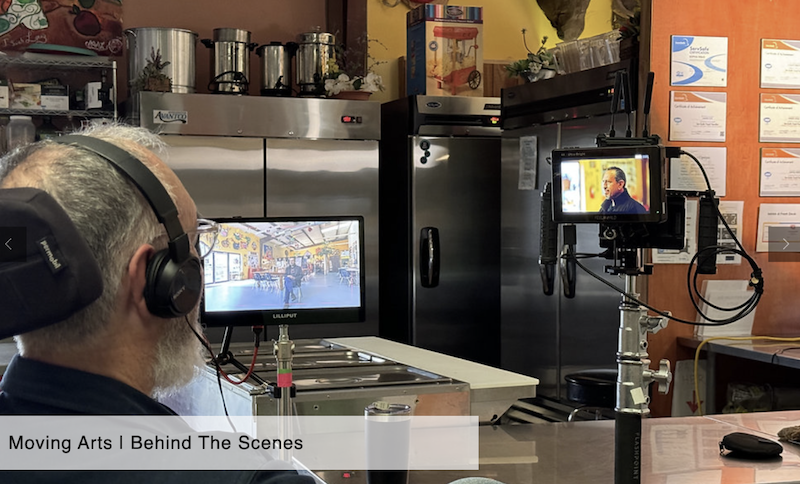

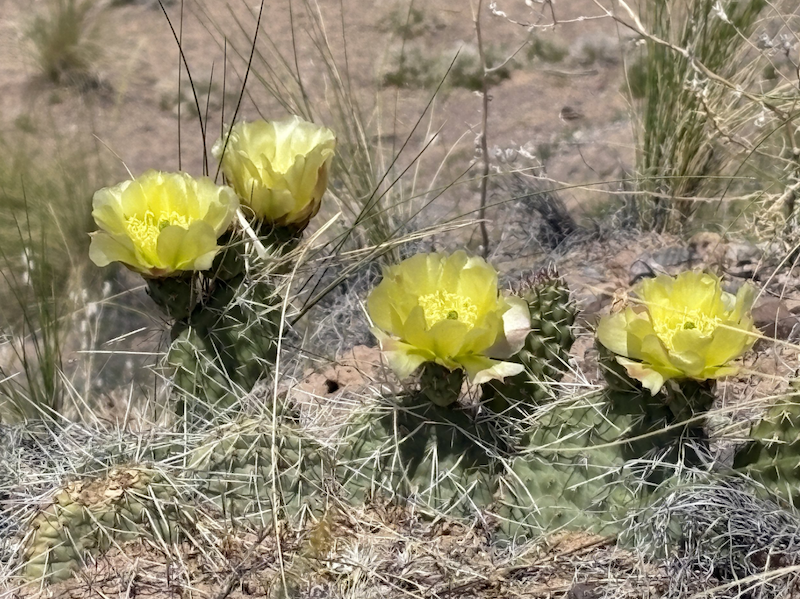
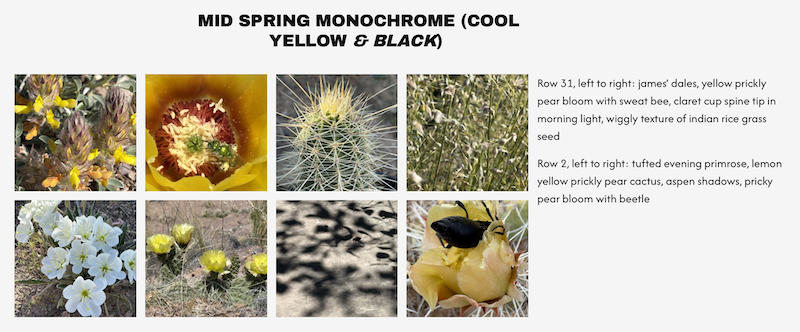




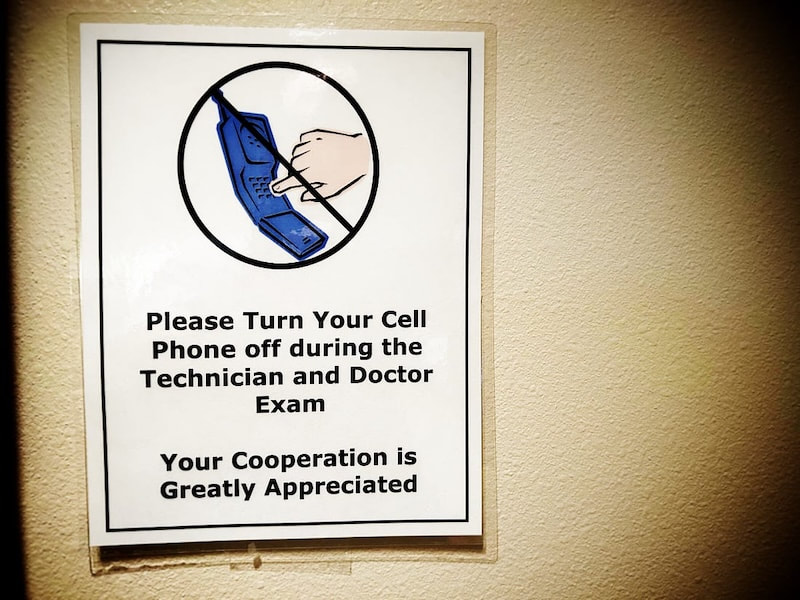





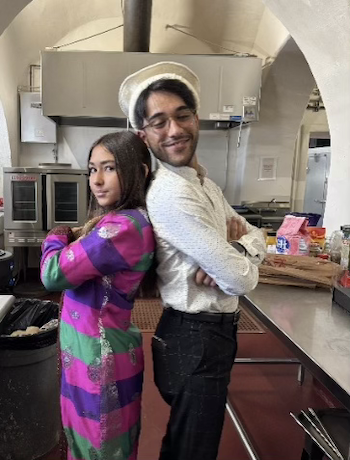



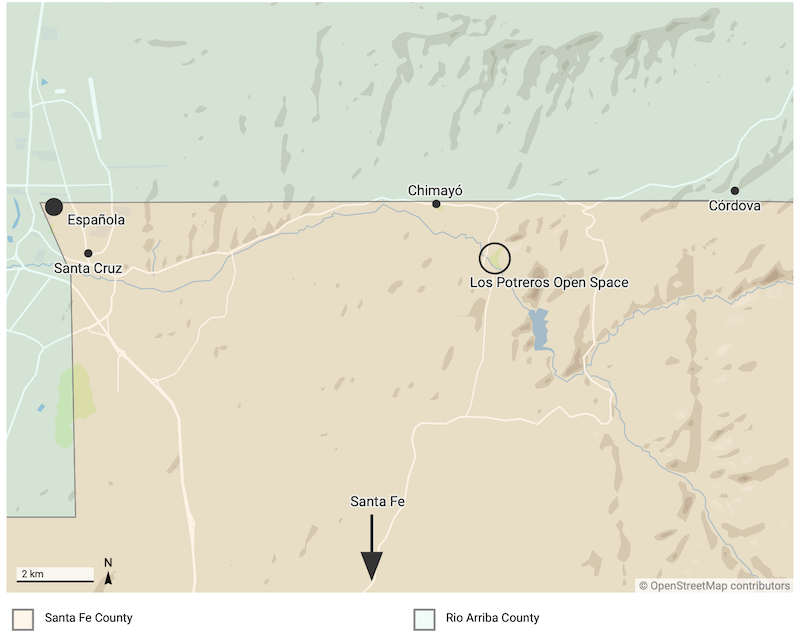
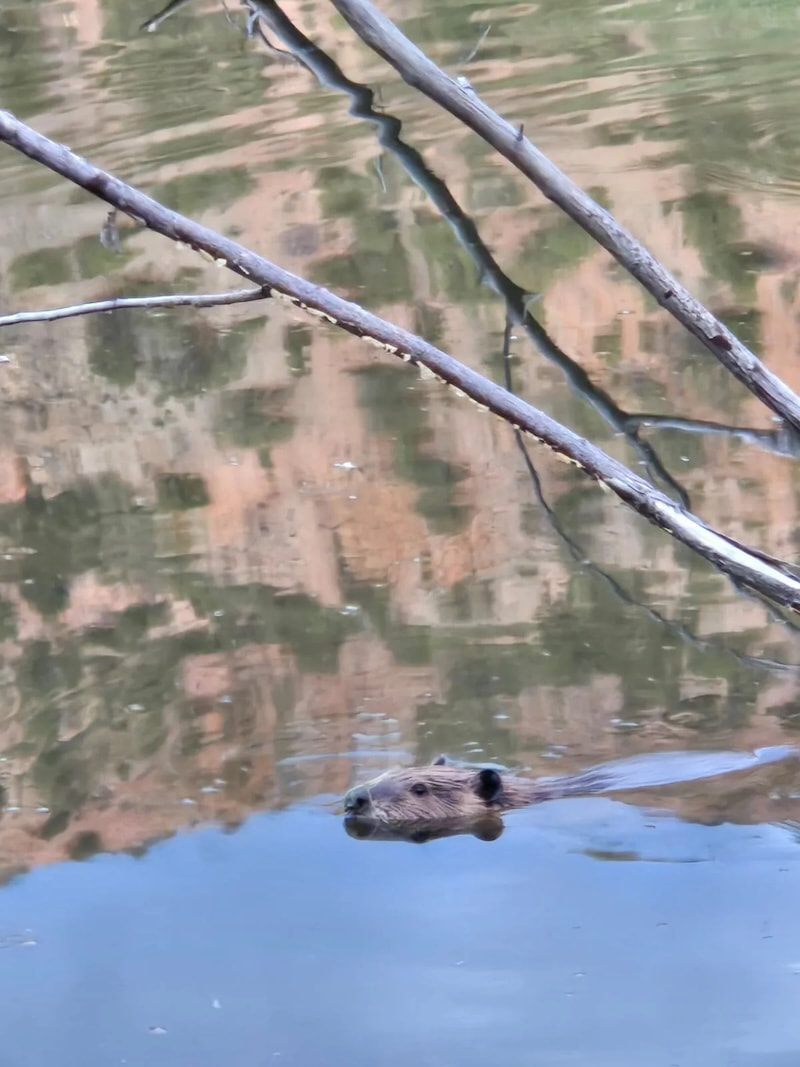
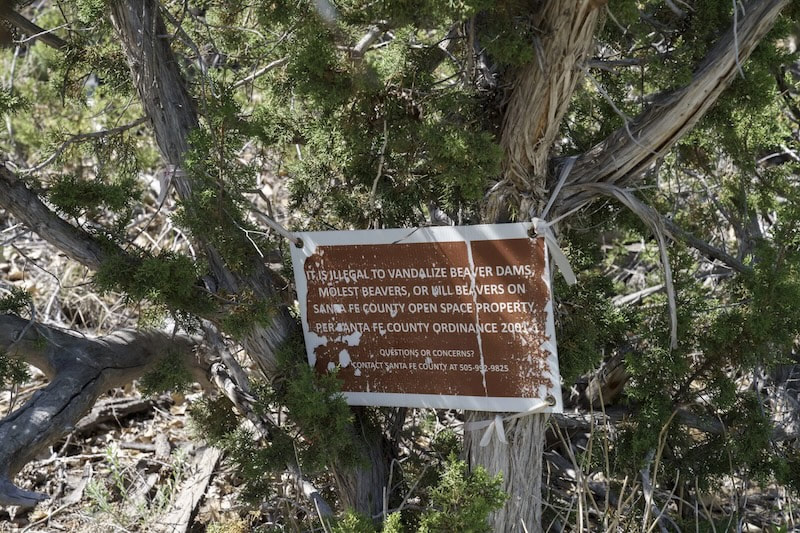


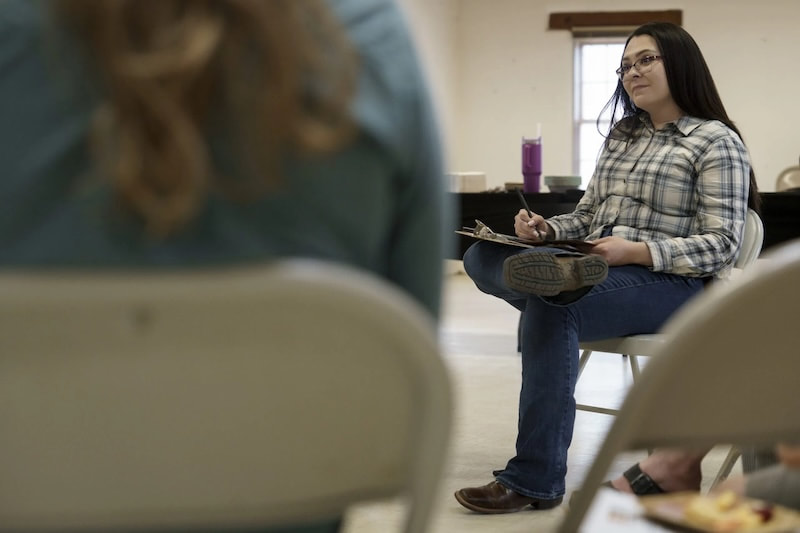
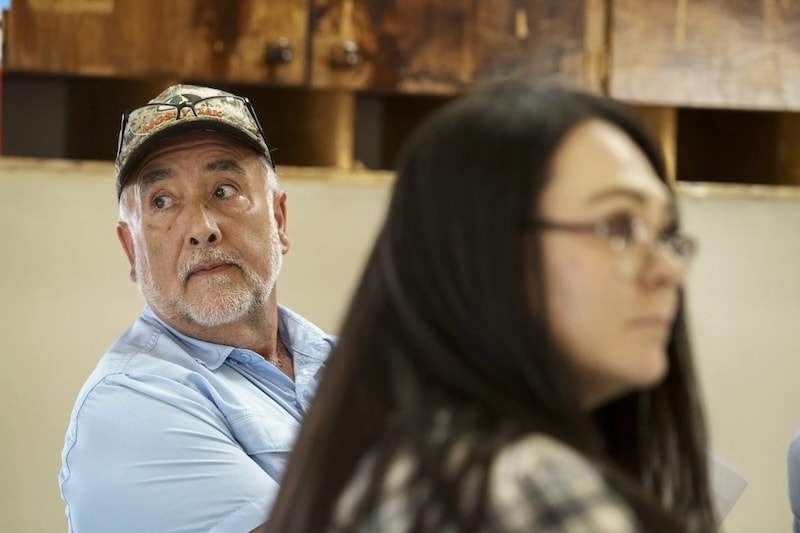





 RSS Feed
RSS Feed